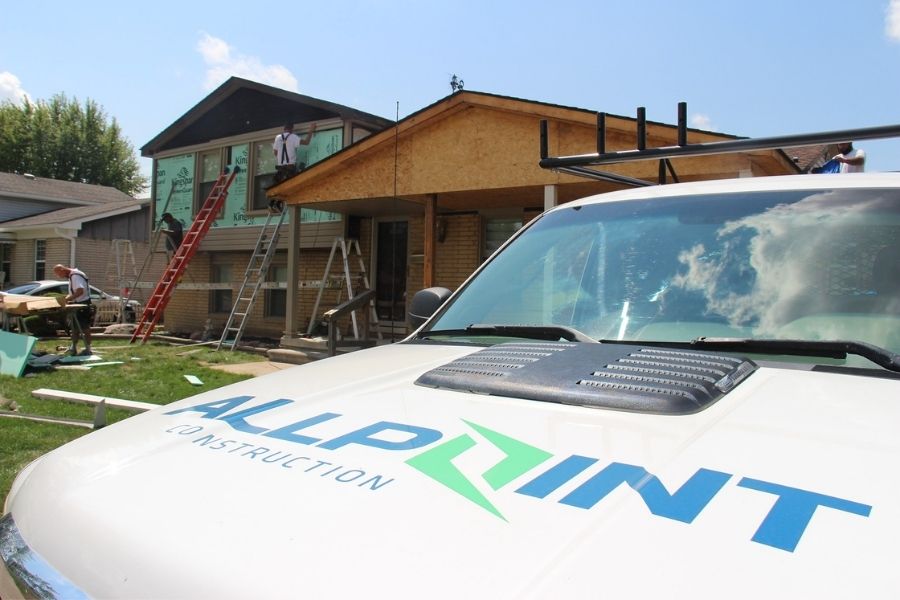10 Signs Your Plymouth Home Needs Siding Repairs or Installation
Your home’s siding is a very important part of the structure. Your siding serves two vital purposes. The first is protecting your home from the elements. Siding combines with your roof to form the outer layer of a house’s resistance to weather – good or bad. Your siding must be both UV-resistant for sunny days and waterproof for rainy days. The second purpose is to provide a beautiful texture for the home’s external appearance. So it’s no wonder that siding contractors are in high demand when there are signs of siding damage.
Many homes today feature vinyl siding, so when it comes time for maintenance and repairs, you will need to hire vinyl siding contractors. Plymouth Michigan homes, in particular, face serious seasonal storms and extreme temperatures. It’s important to know when your home’s siding needs attention from professional siding contractors, and we can help.
Let’s take a closer look at the signs that your vinyl siding needs repair or attention from siding experts.
1) Rapid or Uneven Fading
Vinyl siding can come pre-stained with a color through the material or you can paint your vinyl siding. Either way, the siding and/or paint will fade over time. This fading is caused by exposure to sunlight. A home that has been installed with the same siding and/or painted with the same paint throughout will fade at the same rate. This means the house will remain the same color visually, even as it fades between paintings or re-siding.
However, if sections of your Plymouth home siding are fading at different rates, this can indicate a maintenance or installation problem. Professional siding contractors can help you identify both the cause and implement the right solution, whether that is siding replacement or a new layer of vinyl-ready paint.

2) Curling or Warping Vinyl Siding
When installed properly, vinyl siding is extremely durable for all types of weather. However, if the siding is not installed in a way that evenly resists the elements, it can warp over time. Siding that is hung poorly or is exposed to uneven heat distribution will begin to either curl or melt. Curling siding will look like it is pulling away from the wall and the texture from a distance will look rough.
3) Peeling Wallpaper or Paint Indoors
Siding’s primary purpose is to keep moisture from getting into the walls and interior of the home. Drywall and the wooden frames of houses do not do well when exposed to rain or high humidity. If your siding is damaged, sometimes the effects can be seen indoors as well as outdoors. For example, you may notice signs of moisture in your wall coverings before any other sign appears.
Paint that begins to bubble and pull away from the wall is a sign that moisture is somehow getting between the paint and the drywall. Likewise, wallpaper will pull up at the corners and begin peeling and curling away from the wall. Wallpaper in the center of panels may also bubble like paint, showing a growing space between the paper and the wall.
4) Visible Punctures and Holes
Vinyl siding is a practical and continuous siding solution. It lightweight and extremely reliable, but it can also be damaged by blunt impact and sharp objects. Among the most common accidental types of damage to your siding is the puncture hole. One enthusiastically moved patio chair or fast-flying backyard baseball can potentially knock a hole in your vinyl siding.
If you can see a clear visible hole in the vinyl siding, then you will need to repair the vinyl panel. Vinyl does not repair the same way as wood, with putty and new paint, you will need to work with siding contractors to replace the damaged section of vinyl if holes were punched or punctured.
5) Increased Cooling or Heating Bills
Just as siding can cause your wallpaper to peel and your paint to bubble, it can also effect the actual temperature inside the house. Siding helps to protect and insulate your home. Without it, the energy efficiency built into the design fails and your AC or heating system can’t keep up. As a result, you will likely notice that your power bill cost used by heating or cooling will skyrocket. This is because your home is no longer insulated. Conditioned air is escaping while the outside climate seeps in through damaged vinyl siding.
6) Vinyl Siding with Ripples and the Appearance of Melting
Sometimes, the need for vinyl siding repairs is very clear – that is when it ripples. Siding is designed to absorb an even distribution of heat from sunlight – a beam that may hit the entire side of the house. However, when sunlight somehow hits the side of a home unevenly, it can cause otherwise heat-resistant vinyl siding to melt and ripple.
This can happen as the result of certain window installations or nearby reflective surfaces. If your vinyl siding has begun to ripple, it’s time to call a siding contractor to investigate the problem, resolve it, and install new siding on your home.
7) Cracked Siding and Loose Boards
Vinyl siding can also come loose from the home’s walls. Whether it was installed poorly or the fastenings were damaged over time, you can often see signs of loose attachment from a distance. Large cracks through your vinyl siding are dangerous because for two reasons. First, a crack can allow moisture into the walls, and second, a crack can create a loose sectioned panel because it splits a secured panel in half.
If you see vinyl siding boards dipping, sagging, or cracked, your Plymouth home vinyl siding will need to be repaired.
8) Bubbled Sections of Vinyl Siding
Remember the wallpaper and bubbling paint? Your siding can do that, too. If moisture or even air gets between the siding and the wall, it can form bubbled sections that appear to pull away from the wall. The good news about bubbled sections is that it is more likely to be repairable instead of requiring siding reinstallation.
9) Mold and Mildew Growth
Most people don’t realize that vinyl siding can grow mold almost as readily as wood siding. The reason for this is that your siding is usually covered in a nearly-invisible layer of dust and dirt. Mold spores can take hold and grow on even the thinnest layer of porous and moist material – like at thin layer of dirt on a home’s exterior siding. Once the mold begins to grow, it holds onto whatever is nearby, including the vinyl.
Mold remediation for your Plymouth home vinyl siding should be handled by professionals, especially up high where you and your ladder cannot safely reach.
10) Home Redesign
Finally, you might want to call Plymouth MI siding contractors to update the design of your home. Whether you’re looking to change the exterior color or completely reinvent your curbside view, installing new vinyl siding is a great way to refresh the appearance and energy-efficiency of your home when redesigning.
Do you need the services of a siding contractor in Plymouth, MI? We’re ready to assist in any way you need. Contact us today to schedule an inspection or consult on your home improvement plans.
MOST VIEWS
5 Tips for Maintaining Your Wood Siding in Ann Arbor Michigan
Wood Siding  September 27, 2017
September 27, 2017
Maintenance Needs of Wood Siding in Michigan
Wood Siding  March 1, 2017
March 1, 2017

